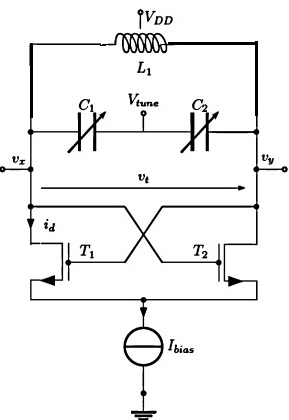palmeiras
Full Member level 6
- Joined
- Feb 22, 2010
- Messages
- 375
- Helped
- 61
- Reputation
- 122
- Reaction score
- 50
- Trophy points
- 1,308
- Location
- South America
- Activity points
- 4,199
Hello guys,
Is there any electrical difference between the center tapped inductor and the normal one?
I know that the differential one is usually using in design of oscillators, for instance, in the figure attached. Neglecting the area, what is the electrical difference between these two devices? Is there any?
Thanks in advance,

Is there any electrical difference between the center tapped inductor and the normal one?
I know that the differential one is usually using in design of oscillators, for instance, in the figure attached. Neglecting the area, what is the electrical difference between these two devices? Is there any?
Thanks in advance,
